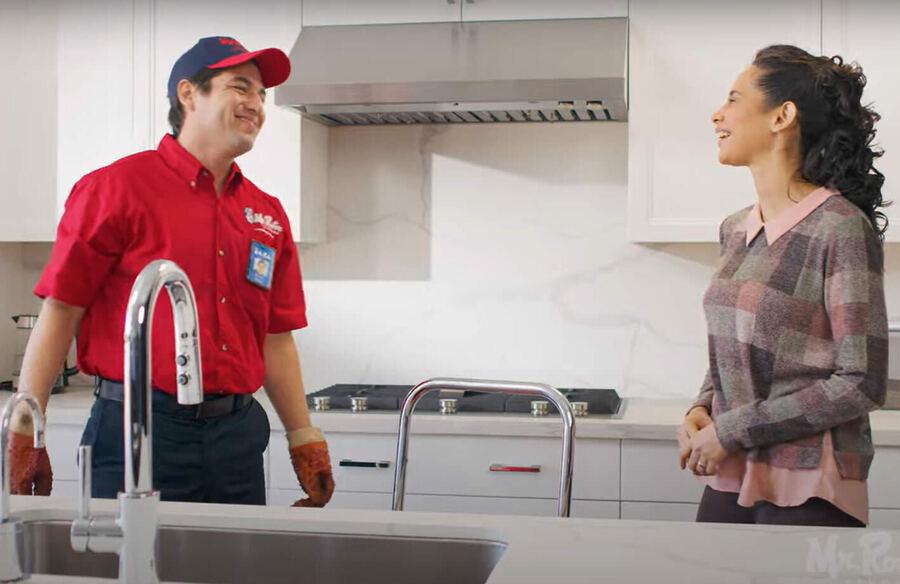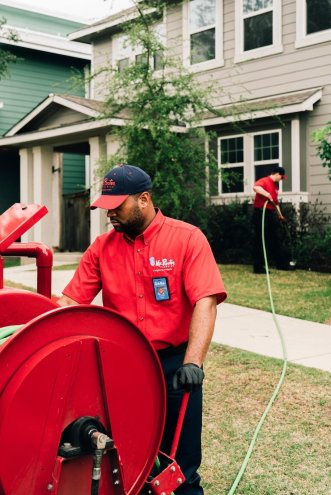The constant dripping of a leaky faucet, whether it’s in the shower or kitchen, is enough to keep you awake all night. Left unrepaired, it can lead to a surge in water bills, mold growth, and water damage. Luckily, fixing a leaky faucet can be a DIY task in some cases, depending on the type of faucet and the severity of the issue.
However, if you’re not a DIYer or need a professional plumbing repair service to help you with faucet repair, call the pros at Mr. Rooter Plumbing. Hiring an expert can save you time, money, and unnecessary frustration. In this guide, our plumbers share pro tips on how to fix a leaky faucet.
- Identify the Type of Faucet
Before you get started, it’s important to know what type of faucet you’re dealing with. The four main types are:
- Compression faucets
- Ball faucets
- Cartridge faucets
- Ceramic disc faucets
Each type has a slightly different internal structure, which determines the repair process. Check your faucet brand or style online if you're unsure. Alternatively, you can consult with an expert specializing in leak detection.
- Shut Off the Water Supply
This may seem obvious, but many DIYers skip this important step. Locate the shut-off valves under the sink and turn them clockwise to stop the water flow. Once the water is off, open the faucet to release any remaining pressure in the line. This step is important to prevent accidental leaks or water sprays while you’re working.
Use a sink plug or a rag to block the drain opening. Small parts like screws or washers can easily slip into the drain and disappear, which can make your repair a lot more frustrating.
Use a flathead screwdriver or Allen wrench to remove the faucet handle. Keep track of all screws, nuts, and small parts as you take the faucet apart. Depending on the faucet type, you’ll need to remove either a washer, O-ring, cartridge, or valve seat. These components often wear out over time and are the most common cause of leaks.
- Inspect and Replace Worn Parts
Examine the parts for signs of wear, corrosion, or cracking. Take the worn pieces to a hardware store to find exact replacements, or buy a faucet repair kit specific to your faucet brand. Replace the faulty components, apply plumber’s grease if needed, and reassemble the faucet.
Once you’ve reassembled the faucet, turn the water supply back on and test it. If the dripping has stopped, congratulations—you’ve successfully fixed your leaky faucet!
- When To Call an Expert for Help
If you’ve gone through these steps and the leak persists, or if the faucet is badly corroded or damaged, it’s time to bring in a professional plumbing repair service. A licensed plumber can diagnose underlying issues and ensure a long-lasting repair. Faucet leaks can also sometimes indicate larger problems in your plumbing system. The age of your faucets could be a factor as well—older fixtures are more prone to internal wear, mineral buildup, and seal failure.
Trust Mr. Rooter Plumbing When You Need Professional Faucet Repair
The tips we’ve shared above can help you restore leaky faucets to good working condition. Remember, if you feel overwhelmed or you’re dealing with a complex faucet type, Mr. Rooter Plumbing is always ready to help. Our plumbers have the expertise to repair all types of faucets, including compression, ball, cartridge, and touchless faucets. We also offer reliable leak detection services to help our customers save water and keep their plumbing in tiptop condition.







